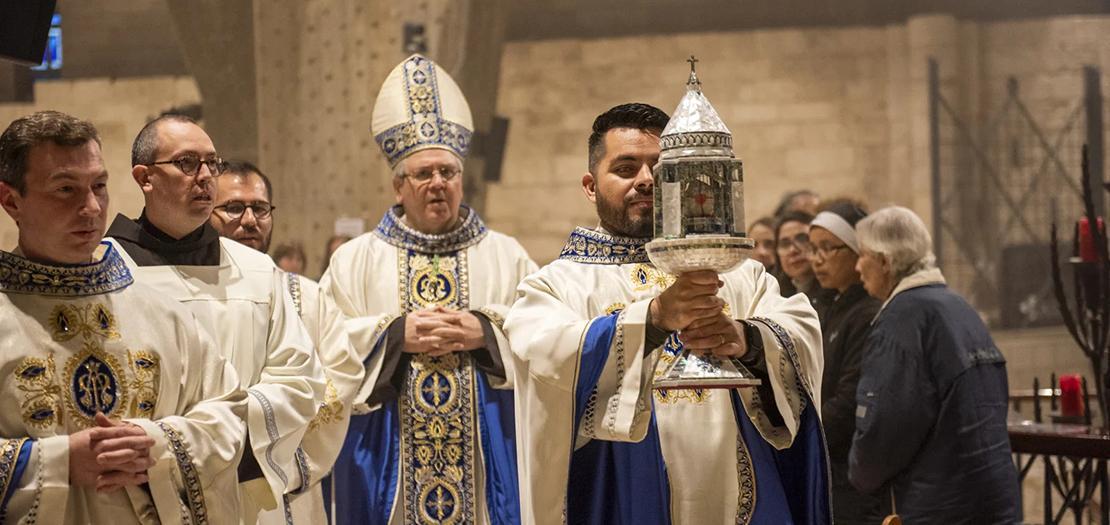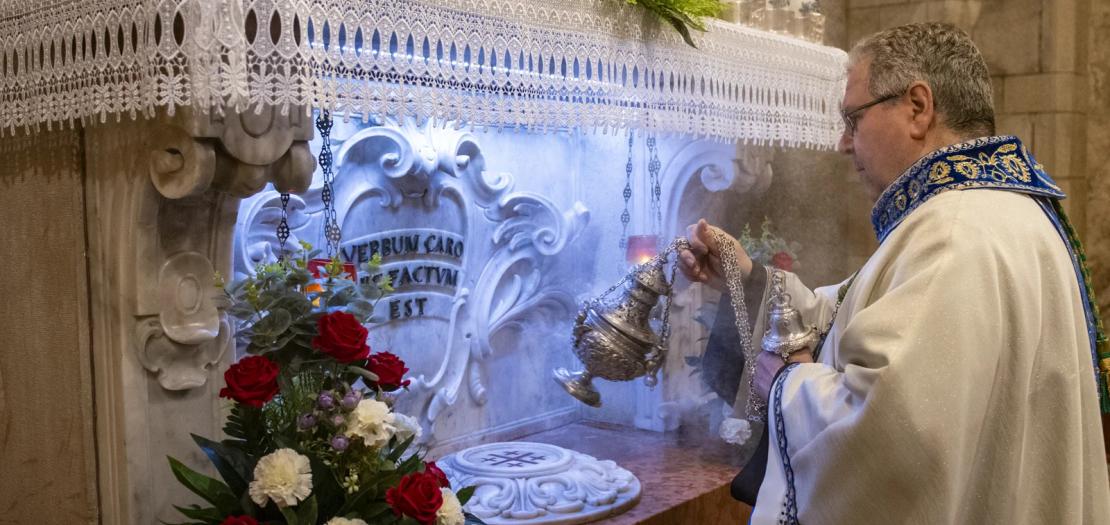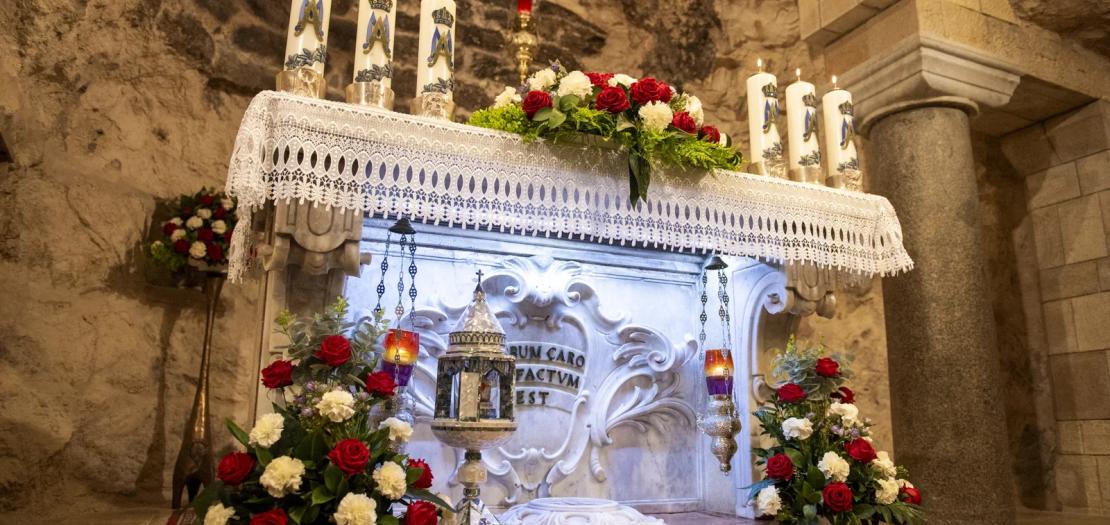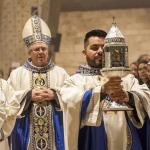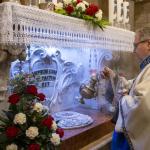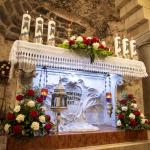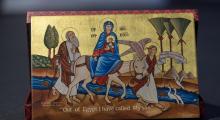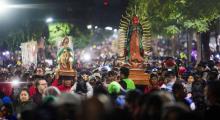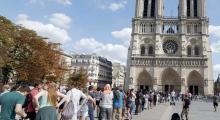Issued by the Catholic Center for Studies and Media - Jordan. Editor-in-chief Fr. Rif'at Bader - موقع أبونا abouna.org
On Monday 20 January 2024, at the Basilica of the Annunciation in Nazareth, the Custos of the Holy Land, Francesco Patton, celebrated Mass in front of a group of thirty-five pilgrims from Mexico.
At the end of the celebration, the Custos gave Fra Josè Alcaraz, commissary of the Holy Land for Mexico, a reliquary containing a fragment of stone from Mary’s home in Nazareth. This precious reliquary, to go on a pilgrimage to Mexico and other Latin American countries, has a wooden structure covered in mother-of-pearl. Designed by the architect Vincenzo Zuppardo, it was then made by the Piccirillo Centre in Bethlehem. At the end of the celebration, the Custos blessed small wooden crosses, giving them as a gift to the Mexican pilgrims.
Accompanying the relic on its pilgrimage there will also be a statue of the Virgin Mary, a reproduction of the one in the Basilica of Nazareth, produced on commission by the artist Santiago Ocampo Higuita.
In his homily, the Custos underscored the amazement that distinguishes Mary’s face who welcomes God into her life with humility and faith.
“The image that today we are blessing and which from here will start out on this pilgrimage to Latin America expresses in a particularly successful way the astonishment and faith of Mary. There is all the astonishment and joyous faith in her eyes and in the posture of her arms and hands of a woman who welcomes the Son of God into her womb.”
A pilgrimage of hope
The decision to take the Relic of the Holy Land on a pilgrimage across the ocean was taken last October by Fra Josè. At a time when it is not possible for many pilgrims to reach the Holy Land, Fra Josè wondered: “If we cannot go to the Holy Land, why not ask the Virgin Mary to come to us?" Hence the idea to make a copy of the statue in Nazareth, to symbolize the Madonna who sets out to go and meet her children. Thanks to the relic of the house in Nazareth, all pilgrims will be able to touch with their hands a tiny piece of the Holy Land in their country.
Once it arrives in Mexico, the statue and the reliquary will be taken in procession in various cities for at least five years. "In addition,” Fra Josè reflects, “as we are in an important time for the Church, that of the Jubilee, we have also decided to give the Virgin Mary the title of “Pilgrim of Hope”. This way, we will encourage people to hold torchlight processions in their cities, taking the statue with them, praying for peace in the Holy Land and in Latin America.”
From Colombia to the Holy Land
Santiago Ocampo, the artist who created the work, has a close bond with the Custody of the Holy Land, In 2019 he had already created the 'Holy Christ of Silence,’ a crucifix placed in the Holy Sepulcher in Jerusalem, in memory of the victims of the armed conflict in Colombia.
“Here in Latin America,” Santiago says, “we love the Virgin Mary very much and this, in itself, is already a reason for great joy. In addition, for an artist who is also a believer and whose works of art are dedicated to the faith and to the growth of the Church, making this statue is a source of great pride.”
Mary the bearer of hope
The pilgrimage that the statue and the relic will make is full of meaning at the start of the Jubilee of Hope indicted by Pope Francis. As Fra Wojciech Bołoz, guardian of the convent of Nazareth recalls, “The Holy Land is in itself a place of hope, especially here in Nazareth, where the Annunciation took place. Here, with the Virgin Mary’s ‘yes’, the hope of salvation for humanity was born.”
The pilgrimage of Mary, bearer of hope, starts from the Basilica of Nazareth, which in this holy year is a jubilee site. On this journey of five years through Mexico and Latin America, “the Virgin Mary will bring signs of hope to the whole world, that is, Jesus in her womb and who was made incarnate precisely in this Holy Place.”


